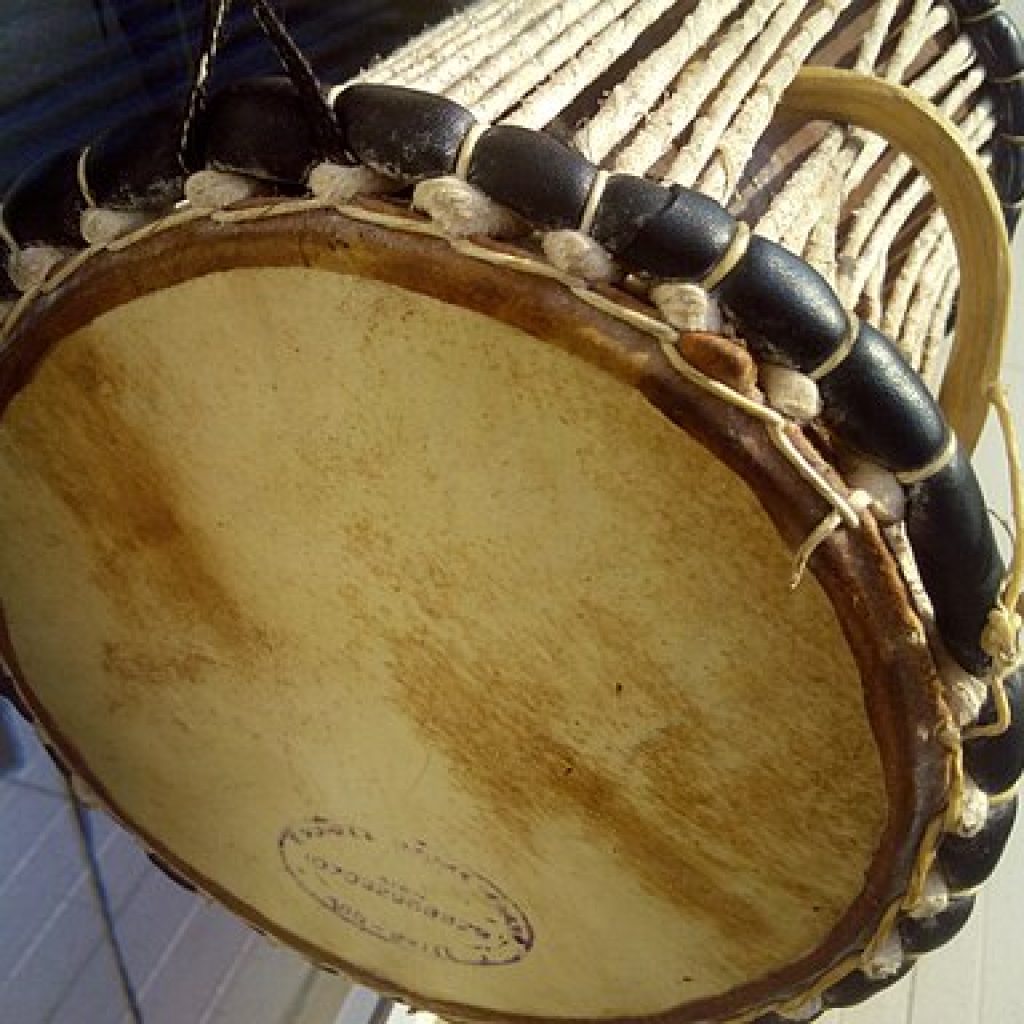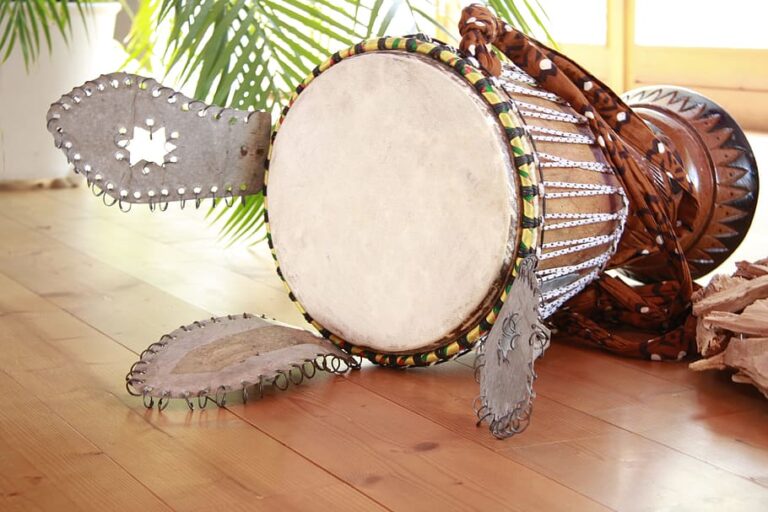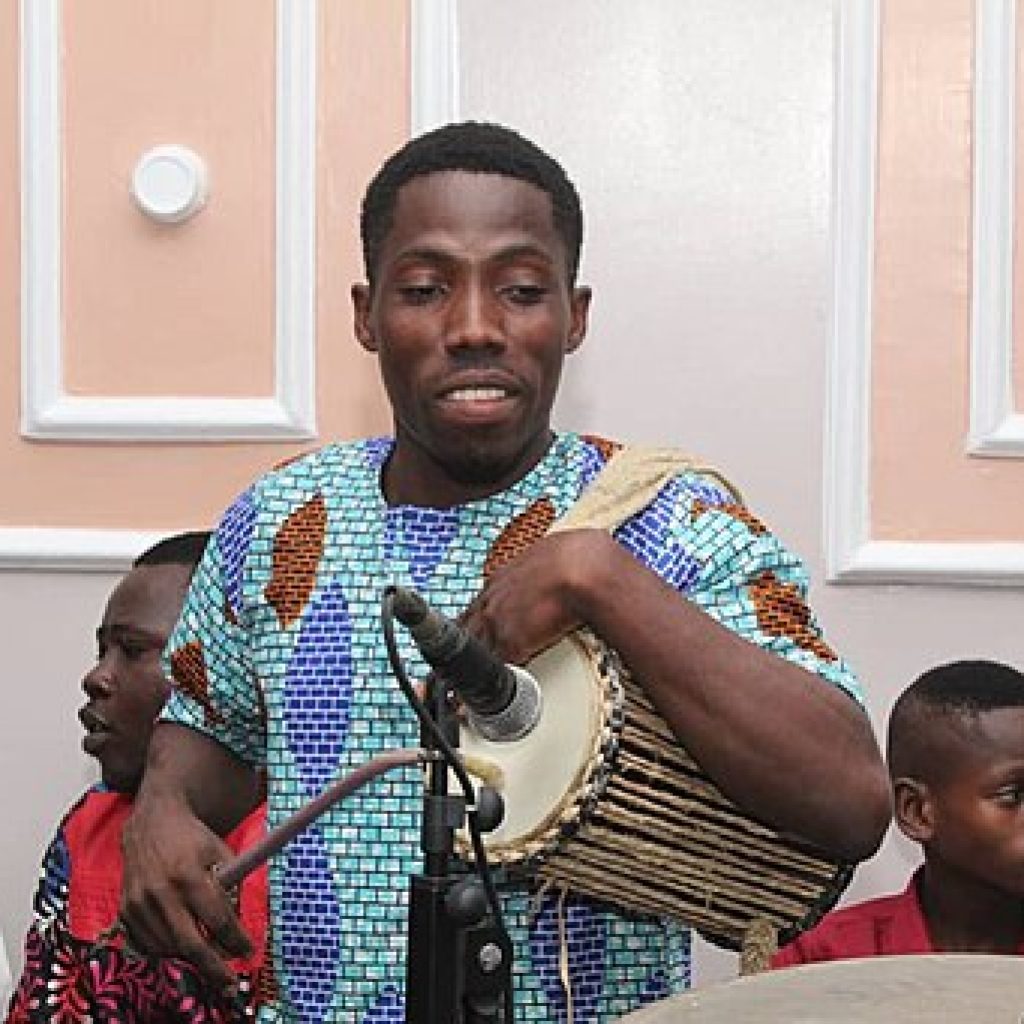Gangan (talking drum)
The talking drum, originating from West Africa, is a drum shaped like an hourglass, capable of imitating human speech in terms of tone and prosody. It consists of two drumheads connected by leather tension cords, enabling the player to alter the drum’s pitch by rubbing the cords against their arm and body.
During the 18th century, these talking drum players utilized various tones to communicate messages, including news about ceremonies and commands, across distances spanning 4-5 miles.

Bamidele S. Ajayi
, CC BY-SA 4.0 , via Wikimedia Commons




